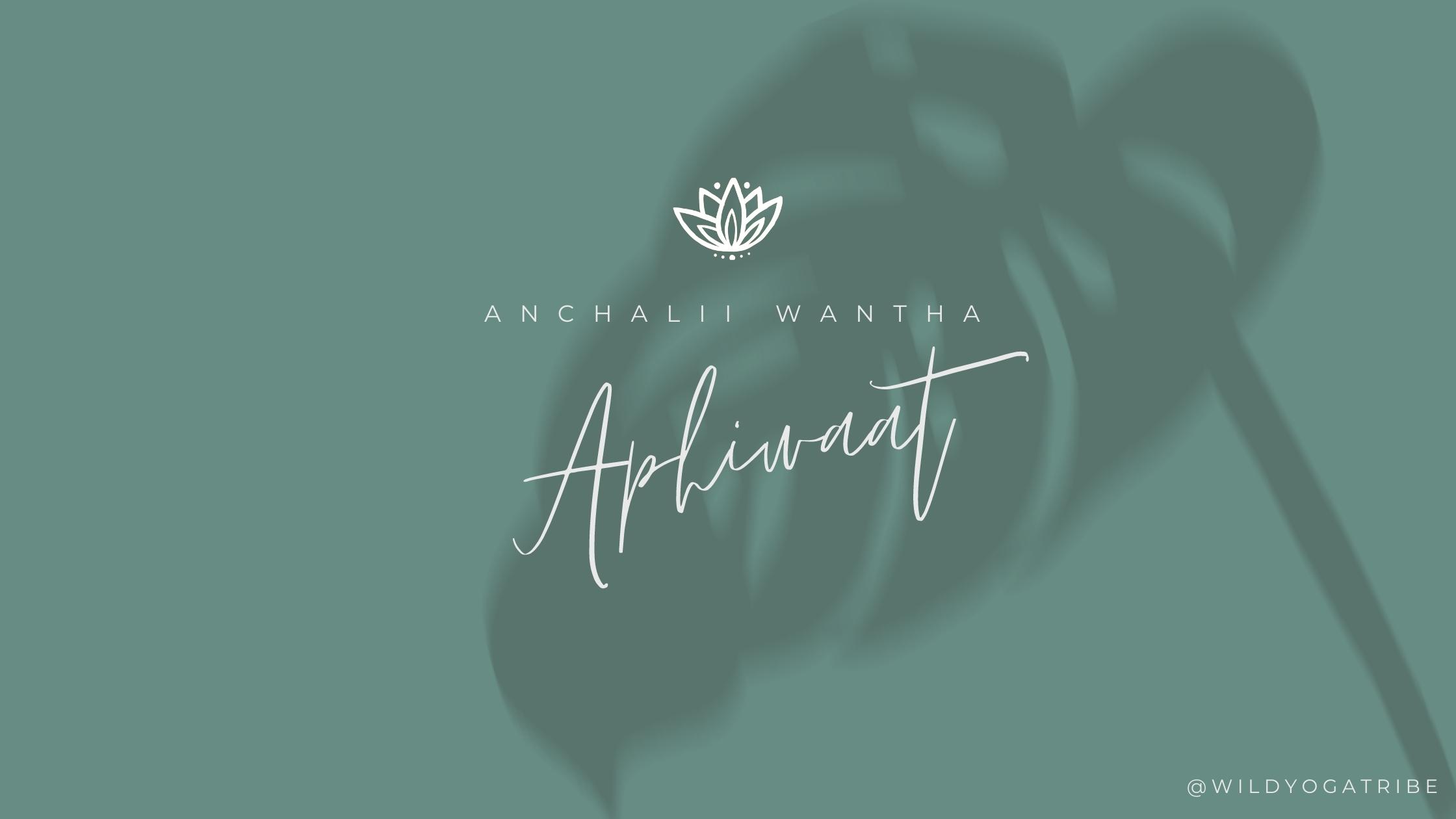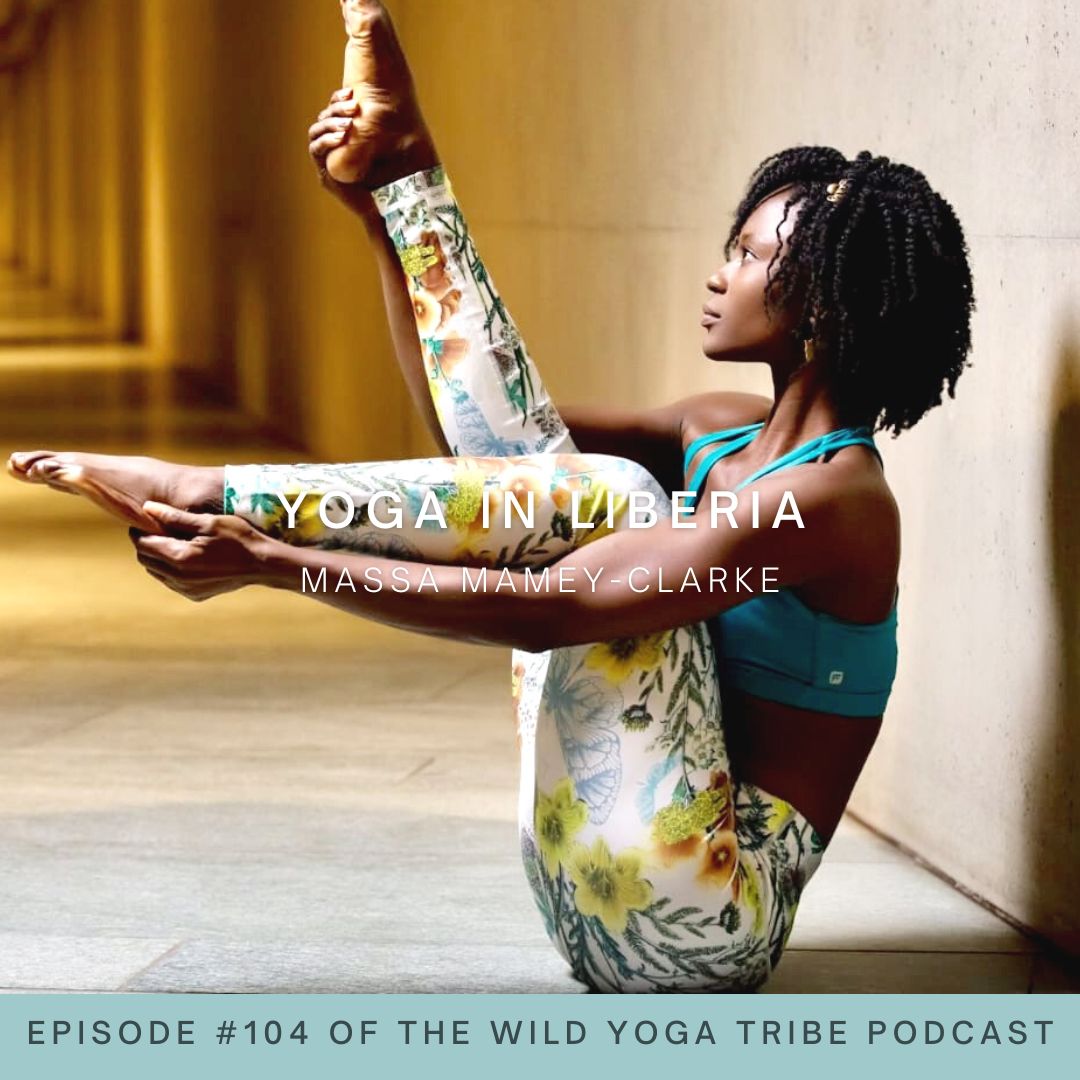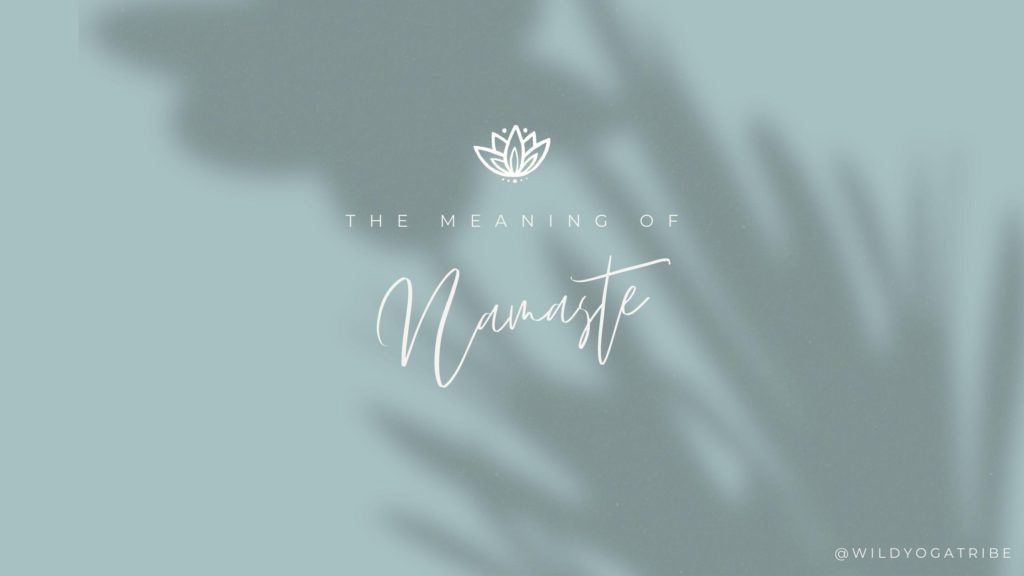
Nearly every yoga studio in the Western world closes their class with the word “namaste.” Usually the teacher folds their hands together in a gesture of prayer, and bows slightly to the students while saying that word. And then the students repeat the word, paired with the hand gesture and bow.
Now that namaste has taken over the West, it feels almost ubiquitous. There are namaste tattoos, namaste wall hangings, and even na-ma-stay in bed memes. I consider it unfortunate that this precious word is now treated so lightly.
What Does Namaste Mean?
Namaste is a sanskrit word, and has a few English translations floating out there. Generally, it is accepted that namaste means that the light in me honors the light in you. Namaste can also be translated to the divine in me acknowledges the divine in you. In Sanskrit ‘Nama’ means bow, ‘as’ means I as in the self, and ‘te’ means you. Thus, namaste translates quite literally to: “bow me you,” or when considering English grammar practices, “I bow to you.”
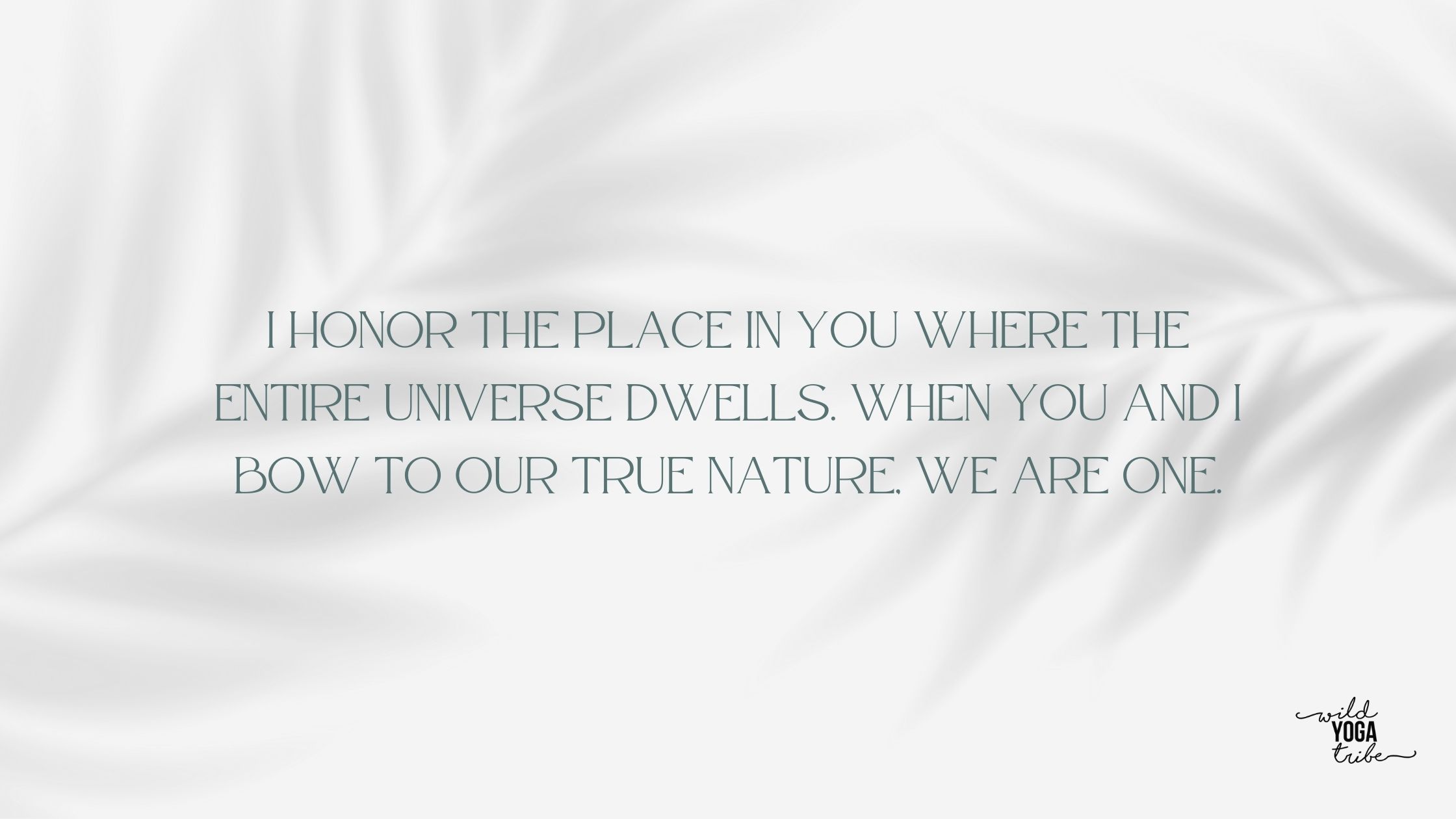
By bowing and honoring the light in others, we find our own light. When we focus on illuminating the fact that we are all connected, we further our own knowledge of this truth. Coming from a singular source, we direct our awareness to the truth that we are all divine, all good, all connected. Namaste reveals our underlying wholeness.
As we grow in awareness, through spiritual practices, these illuminated moments will not last for just for a mere moment, but will persist longer and longer in our beliefs and consciousness.
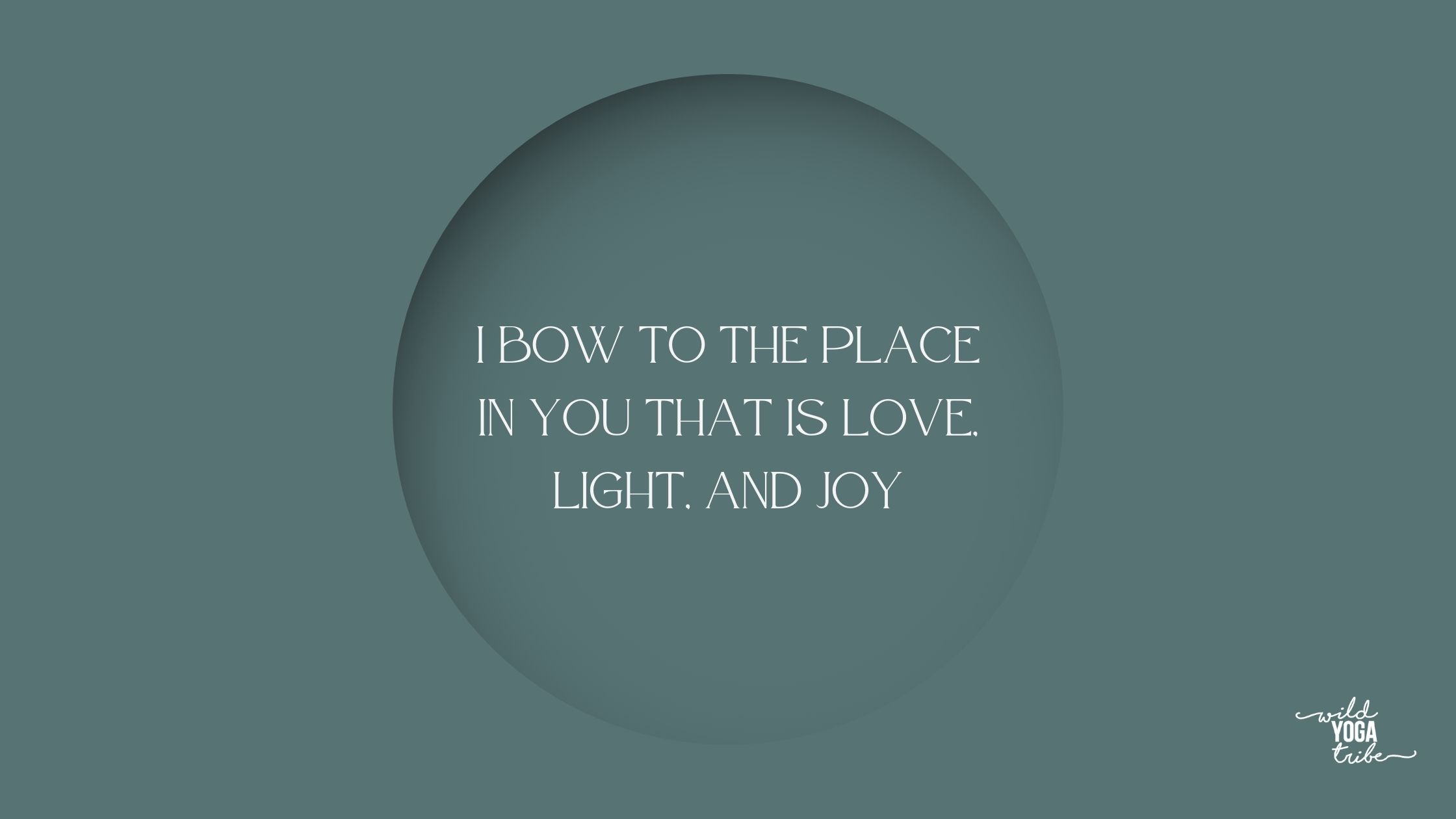
How Is Namaste Used In The Eastern World?
During my time spent in yoga classes in India and Nepal, which is inarguably the birthplace of yoga, no one ever says namaste during or after a yoga class.
In the languages of India and Nepal, Hindi and Nepali, the word for “hello” is actually “namaste.” Namaste is an informal and very casual greeting that is probably uttered a thousand times a day as you walk the streets. It very nearly floats in the air there, so often is it said.
The yoga teachers might greet their students and their classes with the word namaste, but the intention is solely that of a greeting. While the word namaste does carry the connotations of honoring the light and divine nature of other beings, the word itself is used without cherishing or revering the word itself like we now do in the Western world.
So Then, Do I Say Namaste In India or Nepal?
Yes, of course you should use namaste in the same way the culture does. Use namaste as a greeting, the same way you would use “hello.”
However, it is important to know that there are actually three forms of greeting you can use in India and Nepal, which vary dependent on who you are speaking to and the level of respect you hold for him or her.
The three forms of greeting:
- Namaste
- Namaskara
- Pranam
As previously mentioned, you can use namaste informally and casually. When you travel in India and Nepal, namaste you will say and hear namaste a thousand times a day.
Whereas namaskara is to be used with intention, care, and thought. Namaskara, or namaskar, is to be used to those who you respect. Namaskara is a greeting to adopt when speaking to those who are older than you and to those you wish to approach with more courteousness.
Pranam is reserved for those who you hold in high esteem. Pranam is the greeting to use when you encounter holy men, babas, or spiritual leaders. If you have a guru, pranam is always the correct form of greeting to use.
What Gesture Do I Do With Namaste?
To use namaste, namaskara, or pranam as a greeting, place the hands together at the heart chakra and bow the head. You can also make this gesture by putting the folding the hands together in front of the third eye, gently bowing the head, and then lowering the hands back down to the heart. In India and Nepal, it is more common to place the hands over the heart. Indeed, this gesture is performed many times a day to accompany each and every namaste, namaskara, or pranam that you say.
“The body itself is a screen to shield and partially reveal the light that’s blazing inside your presence.”
Rumi
One More Note On Respect
As a final bit of knowledge to share, it is a very common practice in India to tack on two little letters after a person’s name: -ji. This is pronounced simply as the English letter “G.” By adding -ji to the end of a name, you show respect for the other person. It is used very frequently by people you will enountered. You can think of it similarly as using Miss or Mister.
I am called “Lily-ji” by many of my Indian friends. While it should be used when addressing those who you hold in hold in high esteem, it can also be used informally as a polite way to offering respect those around you.
Final Thoughts
I hope you enjoyed learning more about what namaste means and how namaste is used today in the Western world versus in the Eastern world. For a little more fun, check out my quick video on Namaste and share your thoughts on social media. What does namaste mean for you? I’d love to hear your thoughts!
Thanks for being a part of the Wild Yoga Tribe!
Want more? Check out the Wild Yoga Tribe podcast!
https://wildyogatribe.com/podcast/
Tune into the Wild Yoga Tribe podcast on Apple Podcasts or on Spotify! If you feel called, please subscribe and give a review!
Questions? Comments? Let’s get social!
https://www.instagram.com/wildyogatribe/
https://www.facebook.com/wildyogatribe
https://twitter.com/wildyogatribe
Mediate with me: https://insig.ht/6gFTaXHlogb
Flow with me: https://www.youtube.com/c/WildYogaTribe
Book a private yoga or meditation class with me: https://wildyogatribe.com/yogaclasses
Everything you need is just one click away! Check out all the resources here: https://linktr.ee/wildyogatribe



